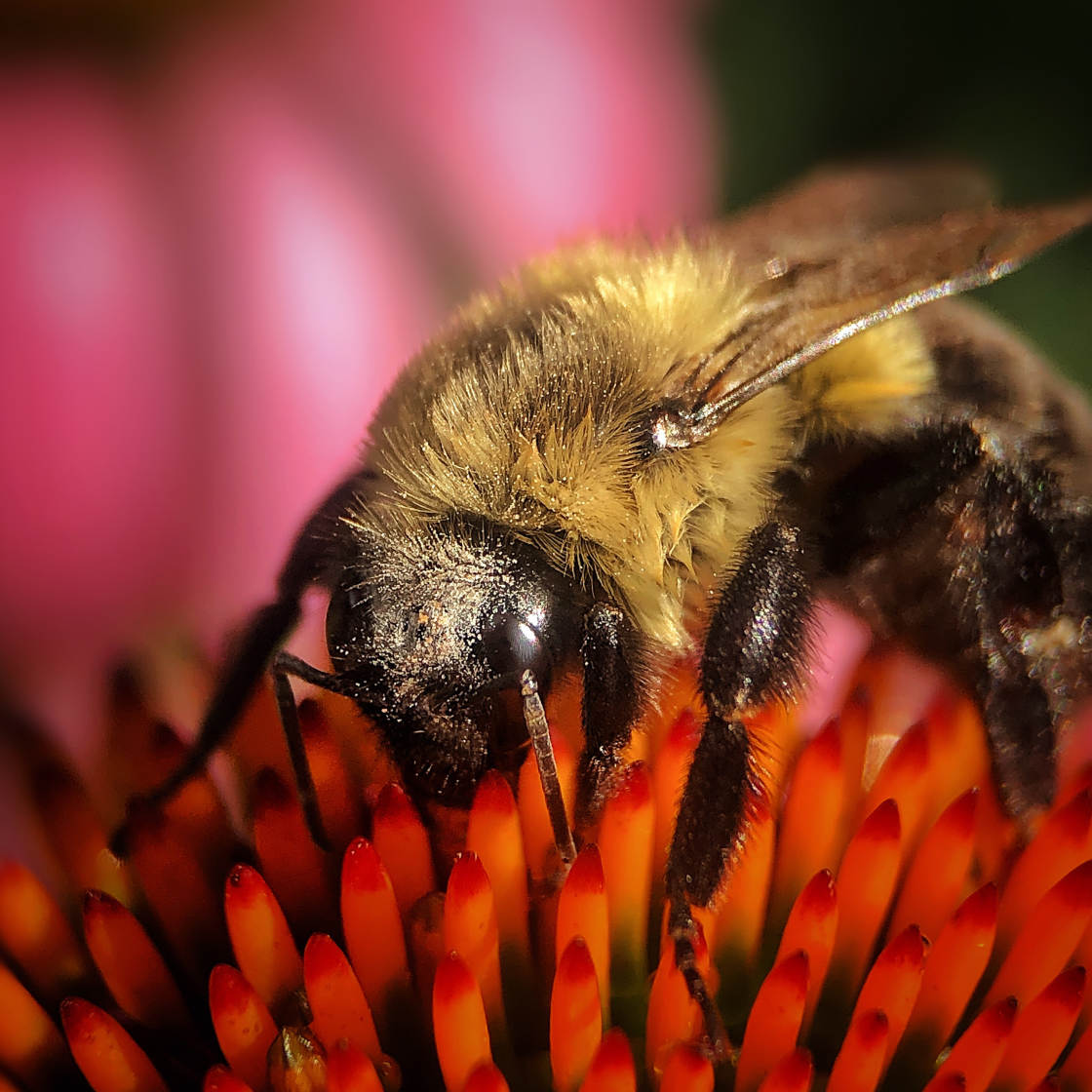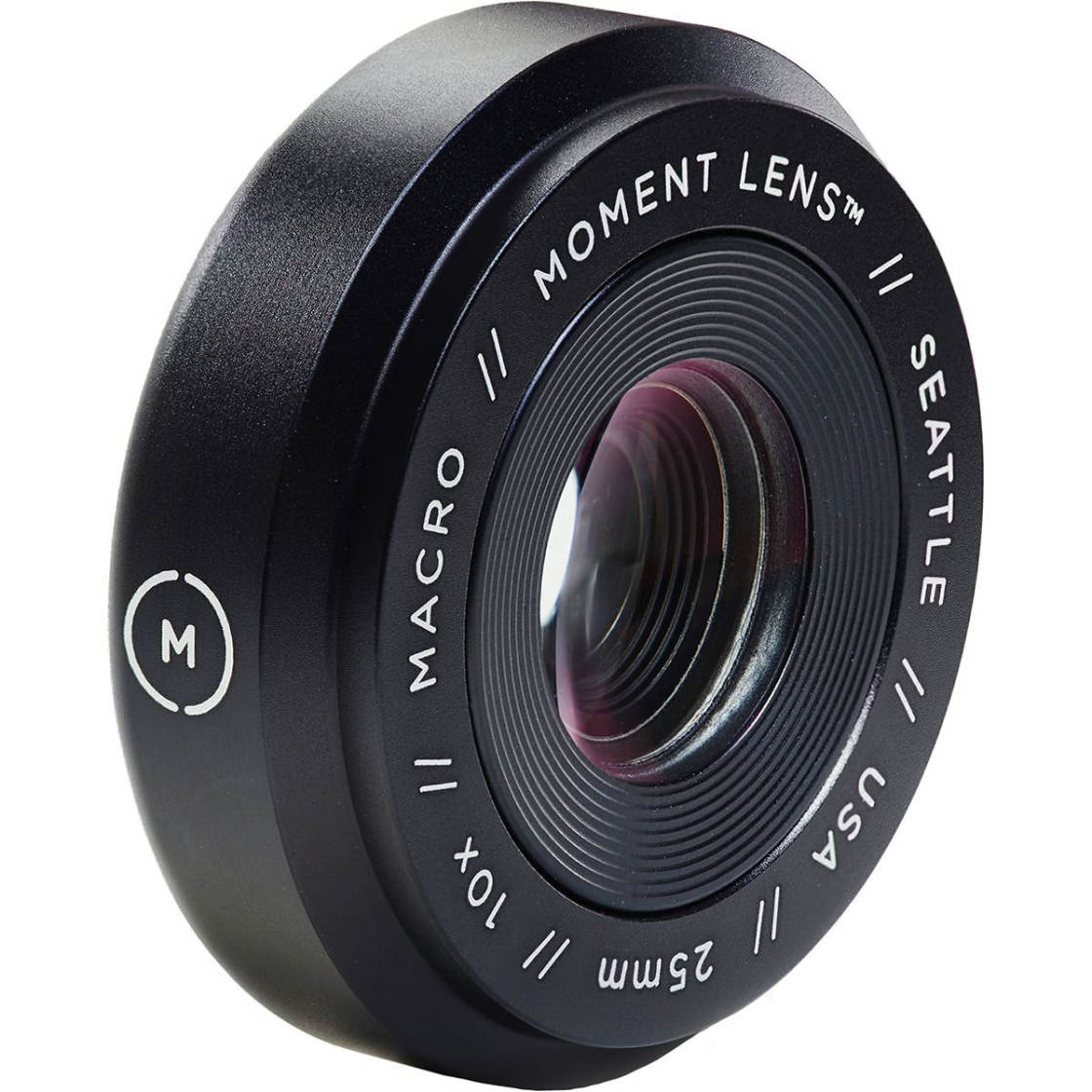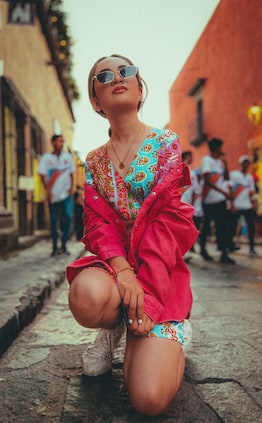Do you want to explore the fascinating world of nature macro photography? With an iPhone macro lens, you can capture incredible close-ups of flowers, leaves, insects, and other small subjects. But for beautiful, sharp macro photos, you need to know a few tricks. Read on to discover 8 tips for stunning nature macro photography with your iPhone.

1. Capture Close-Up Detail With An Add-On Macro Lens For iPhone
Your iPhone’s built-in lenses can’t focus at very close distances. When you get too close to the subject, the image ends up blurred.
So, how do you shoot sharply-focused close-up photos with your iPhone?

It’s actually really simple:
You use an add-on macro lens for iPhone!

An iPhone macro lens allows the camera to focus at very close distances.
And this is perfect for capturing the intricate textures and details found in nature.

There are many different macro lenses available for the iPhone. If you’re looking to buy one, ensure you choose a good-quality lens.
The better the lens quality, the sharper your images will be.

One of the best quality macro lenses available is the Moment macro lens.

The Moment macro lens costs $129.99. You’ll also need the Moment iPhone Case (from $49.99) for connecting the lens to your phone.

Moment lenses are quite expensive compared to some other makes. But the image quality is very high, so they’re definitely worth it.
If you don’t want to spend that much, there are many cheaper macro lenses available. Just be aware that the image quality probably won’t be as good as the Moment macro lens.
Once you’ve got your macro lens attached to your iPhone, you can start shooting gorgeous nature macro photography!

2. Find An Interesting Subject For Your Nature Macro Photography
How do you find interesting subjects for your close-up nature photography?
Here’s the great thing:
You don’t need to be in an exotic location to find fascinating subjects.

Just go out into your garden. Take a stroll through your local park or nature reserve. Or explore the countryside whenever you get a chance.
Flowers, leaves, grasses, and seedheads are perfect for macro photography. And you’ll find them in abundance wherever you go.
Insects also make spectacular subjects. Once you start looking, you’ll find all sorts of insects on plants and flowers.

Twigs, bark, lichen, moss, and fungi are always interesting to photograph up close.

Dewdrops, raindrops, and icicles also look amazing through a macro lens.

And don’t forget about delicate subjects like feathers and cobwebs.
I also love to search for something a little unusual out in nature.
For example, there are beautiful flowers everywhere. But what catches my attention is imperfection.

Maybe the flower isn’t perfectly formed. Perhaps it’s drooping or decaying.
This imperfection is wonderful for conveying some kind of atmosphere or emotion.

It gives an ordinary flower a bit of character. And it tells a little story…. which is so important in photography.
3. Use Color, Shape & Texture For Compelling iPhone Macro Photography
There are certain characteristics that really stand out in iPhone macro photography.
So what features should you look out for in your subjects?
What is it that creates a compelling close-up nature photo?

Color is a great way to create eye-catching nature macro photography.
Vivid colors always work well. A colorful flower or insect will really catch the viewer’s attention.
But don’t be afraid to photograph more muted colors too.
Muted colors can convey a wonderfully calm mood in your photos.

Shapes are another thing to look out for.
Strong shapes are great for making your photos stand out – especially when they’re displayed as tiny thumbnails on Instagram.

When you’re out in nature, notice how many different shapes there are.
Study the shapes of flowers, leaves, twigs, and other small objects.
And then incorporate them into your photos to create a strong visual impact.

Finally, keep your eyes peeled for interesting textures.
An iPhone macro lens will pick up the tiniest details in a textured object. And this really brings your photos to life.

Photograph rough textures, such as bark, dried leaves, and lichen.
But don’t forget about delicate textures too.

Cobwebs, feathers, and softly-textured plants look beautiful in a macro photo.
4. Get Your Macro Subject In Sharp Focus To Capture Incredible Detail
When you shoot with a macro lens, only a small part of the scene appears in sharp focus.

This means you have to be very accurate when setting focus with your iPhone camera.
First, decide which part of the subject you want sharply focused.
Which part of the subject is most interesting to you? What is it that catches your attention?

Now, you need to get the iPhone camera to focus on that area.
As you move the lens closer to your subject, watch how different parts of the scene come into focus.
Tap and hold the iPhone screen where you want the focus to be set.
When you see AE/AF Lock at the top of the screen, the focus is locked. A yellow box with a sun icon indicates the focus point.

At this point, you can swipe up or down to adjust exposure (brightness) if necessary.
Hold the camera steady, then tap the shutter button to take a shot.
Now, here’s the key to getting perfectly focused macro photos:
Take lots of pictures!

The chances are that the focus won’t be perfect in the first shot.
The trick is to adjust your distance very slightly so different parts of the subject appear in focus.
Move the camera in and out slightly to adjust the focus point. Use tiny movements. And take pictures every time you change the distance.

You could even hold down the shutter button to shoot multiple photos using burst mode.
The more pictures you take, the more chance you have of getting at least one shot with perfect focus.
And with practice, you’ll get a good idea of how close you need to be to get sharply-focused photos.

You’ll also get the best results on a still day.
It’s difficult to focus on a flower or leaf that’s moving around in the wind. If there is a breeze, hold the stem to keep your subject still.
If you’re photographing an insect, try locking the focus on something else, then move in towards the bug.

Follow it with your iPhone, taking as many photos as you can at slightly different distances.
Try to get the insect’s eyes in focus. Sharply-focused eyes create a strong connection with the viewer.

Finally, ensure you keep the camera lens clean and dust-free. You’ll never be able to capture clear and sharp iPhone photos with a dirty lens!
5. Ensure The Background Complements Your Macro Subject
In macro photography, the background always appears blurred.
But this doesn’t mean the background isn’t important.
In fact, the background is extremely important in nature macro photography.

A good background helps the main subject stand out. And it never distracts the viewer from the foreground subject.
So, what makes a good background for nature macro photography?

A neutral background without too many distractions is usually the best option.
If the background is too busy, it takes attention away from your subject.
You don’t want too much detail in the background. But you need a little bit of texture or contrast to create beautiful background blur.

Consider how the color and brightness of the background affects your photo.
Does the subject stand out against the background?
How does the lighting and color of the background affect the mood of the image?

A dark background creates a very different mood from a bright background.
Likewise, a vivid colored background has a different atmosphere from a more muted background.
Too many different colors can be distracting. So it’s usually better to have a single color, or at least similar colors, in the background.

Of course, when you’re shooting outdoors, you don’t have much choice about the surroundings.
But you can change your shooting angle to get different parts of the background behind your subject.
Or gently bend a flower or twig to change its angle and include a better part of the background.

Taking the time to include a good background will make a big difference to your iPhone macro photography.
So always consider how color, texture, and light affect the background in your photos.
6. Consider How The Light Affects Your Image
What kind of light is best for nature macro photography?
And how do different kinds of light affect the quality and mood of your photo?

For best results, I’d recommend shooting on a slightly overcast day.
Why?
Because a cloudy sky creates a soft, even light… which is much easier to shoot in.

The problem with a sunny day is that your macro lens can cast a dark shadow on your subject.
But a cloudy sky diffuses the sunlight. And this means you won’t get any of those harsh shadows.

Of course, shooting on an overcast day isn’t always convenient. So here are some tips for capturing great macro photos in bright sunlight:
If you have to shoot on a sunny day, the mid-morning and mid-afternoon light tends to be best. At these times, the light is less intense and the shadows aren’t so harsh.

If the sun is casting shadow lines on your subject, you could try using your body to block the light.
Stand with the sun behind you so that you cast a shadow over the entire subject. Just be careful that the scene doesn’t become too dark.
You could also try shooting with the sun to one side of you. That way, you’re less likely to cast a shadow with your lens.

Sometimes, backlighting can work well too. This is where you shoot into the light so the subject is illuminated from the back.
Leaves can look beautiful when they’re backlit. The color and texture will be enhanced when the light shines through them.
Backlight is also great for macro photos of icicles. The light shines through the ice, revealing stunning detail.

In general, I avoid shooting early in the morning or late in the evening. The lack of light can result in grainy images.
However, if you have some beautiful golden light behind your subject, you can get some stunning results.
7. Experiment With Composition For More Eye-Catching Macro Photos
Composition is all about where you position the main elements within the frame.
Good composition is key to creating beautiful and engaging photos.
But when you’re shooting close-up subjects, what kind of composition techniques can you use?

Composing a macro photo isn’t that different from composing a landscape shot – or indeed any other kind of photo.
First, you should explore lots of different shooting angles and perspectives.
Don’t just go for the obvious shot.

Take a photo from above.
Then get down a bit lower and take a photo from the side.

Then get really low. (You might even need to lie on the ground!) And photograph the subject from underneath.
Try to show common subjects from more unique angles that people wouldn’t normally see. If you do this, your nature macro photography will be far more interesting.

Next, think about where you position the subject within the frame.
Would it look better in the center or slightly to one side?
If the subject is symmetrical, central placement can work well. The central composition emphasizes the symmetry of the subject.

But often, the composition will look more balanced if you position the subject to one side. This technique is called the rule of thirds.
You can use the gridlines in the iPhone Camera app to position important elements off-center.
For example, you could position a twig on one of the vertical or horizontal gridlines. Or position a water droplet at one of the points where two gridlines meet.

The rule of thirds is a handy composition technique to have in mind when taking photos.
But remember, these rules aren’t set in stone. It’s more about getting the visual balance right.
So, you could start with the rule of thirds. But don’t be afraid to experiment until you find a composition that look balanced and pleasing to the eye.

Close-up photography often involves filling the entire frame with the subject. But I usually like to leave a bit of empty space around the subject.
A bit of space gives room for your subject to “breathe.” It also allows for some leeway to crop or rotate the image in editing.
Some macro lenses produce slight blurring around the edge of the frame. So leaving some space ensures the subject won’t appear blurred.

Finally, look out for leading lines that you could use in your composition.
Lines help to draw the viewer’s eye into and around the image.
At first, you might wonder where you could find lines in nature macro photography. But once you start looking, you’ll find them all around you.

You could use a twig, a flower stem, a blade of grass, or the lines on a leaf.
Look for straight lines, curved lines, and spirals. Then think about how you could position that line in your composition.
Would the line have more impact if it was placed centrally or off to one side?

Would it look better to have the line running vertically or horizontally through the image?
What about positioning the line diagonally through the frame?

Composition isn’t an exact science. So, experiment with different angles. And take lots of photos.
With a bit of practice, you’ll soon be shooting beautifully composed iPhone macro photos!
8. Edit Your iPhone Macro Photos To Enhance The Mood
Knowing how to take macro photos with iPhone is just the first step. Now, it’s time to make them look even better by editing them!

Editing your photos allows you to improve the color, brightness, and sharpness.
But it’s also a great way to enhance the mood of your macro photos.

Try to let the picture dictate how you edit it.
So, if you have a bright sunny photo with a colorful flower or insect, go with it. Make the colors more vivid. Enhance the bright and airy feel of the image.
Don’t try to make it black and white or dark and moody. There’s no point trying to force an emotion or feeling onto it that doesn’t work.

But if you have a photo of some textured bark against a dark background, edit it to make it moodier.
Turn it black and white. Increase the contrast. Darken the shadows to make them really intense.

Snapseed is my favorite iPhone photo editing app. It has a huge range of tools, but it’s very easy to use. And it’s completely free!
The Tune Image tool allows you to make adjustments to color, exposure, and contrast.

The Selective and Brush tools let you make edits to just certain parts of an image.
The Mask tool is also amazing for applying edits to particular parts of your photo.
For example, you often want to sharpen the subject but not the background. Snapseed’s Mask tool lets you choose which parts of the image get sharpened and which parts are unaffected.

The Healing tool allows you to remove small imperfections and distractions from your photo.
And of course, you can crop or rotate your image to improve the composition.

I also use the Perspective tool to tweak the position of horizontal or vertical lines. And the Expand tool is great for adding a bit more background around the edge of the frame.
Finally, don’t be afraid to use the black and white filters in Snapseed. A black and white edit adds wonderful mood and atmosphere to your nature macro photography.

Black and white works particularly well on images with textures, strong shapes, patterns, and lines.
It’s also great for high contrast images that have dark shadows and bright highlights.

I do most of my editing in Snapseed. But if my image looks a bit grainy, I use the ACDSee Pro app. It has an excellent Noise Reduction tool for removing grain.
The main thing to remember is to keep your edits subtle. Use small adjustments to avoid over-editing your photos.
Your aim should be to enhance the natural beauty of your subjects with careful photo editing.




Leave a Reply
You must be logged in to post a comment.